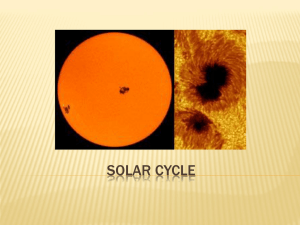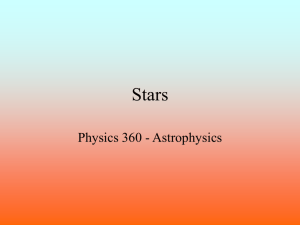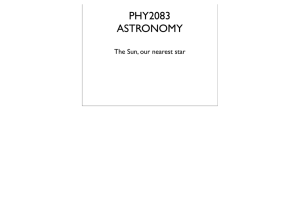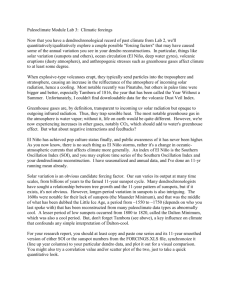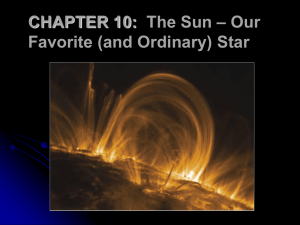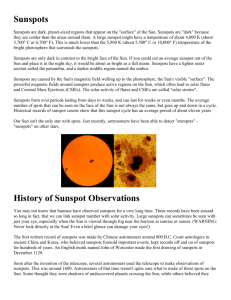here - University of Central Lancashire
advertisement
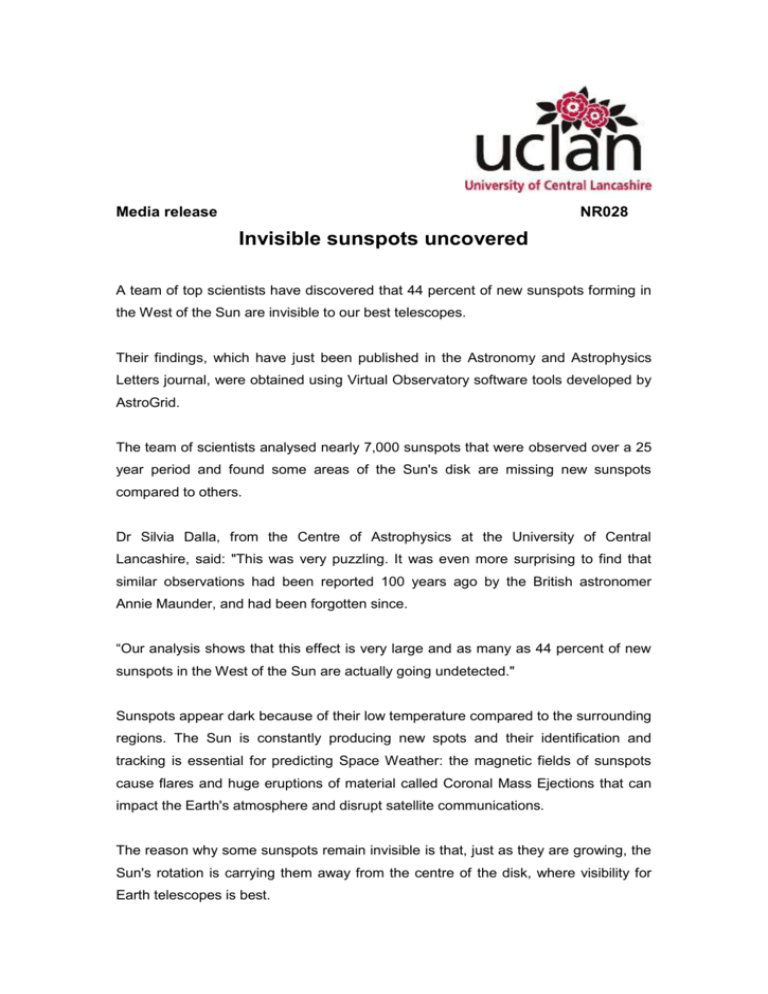
Media release NR028 Invisible sunspots uncovered A team of top scientists have discovered that 44 percent of new sunspots forming in the West of the Sun are invisible to our best telescopes. Their findings, which have just been published in the Astronomy and Astrophysics Letters journal, were obtained using Virtual Observatory software tools developed by AstroGrid. The team of scientists analysed nearly 7,000 sunspots that were observed over a 25 year period and found some areas of the Sun's disk are missing new sunspots compared to others. Dr Silvia Dalla, from the Centre of Astrophysics at the University of Central Lancashire, said: "This was very puzzling. It was even more surprising to find that similar observations had been reported 100 years ago by the British astronomer Annie Maunder, and had been forgotten since. “Our analysis shows that this effect is very large and as many as 44 percent of new sunspots in the West of the Sun are actually going undetected." Sunspots appear dark because of their low temperature compared to the surrounding regions. The Sun is constantly producing new spots and their identification and tracking is essential for predicting Space Weather: the magnetic fields of sunspots cause flares and huge eruptions of material called Coronal Mass Ejections that can impact the Earth's atmosphere and disrupt satellite communications. The reason why some sunspots remain invisible is that, just as they are growing, the Sun's rotation is carrying them away from the centre of the disk, where visibility for Earth telescopes is best. In their work, the three strong team consisting of Dr Dalla, Dr Lyndsay Fletcher from the University of Glasgow and Dr Nicholas Walton from University of Cambridge, demonstrated that the sunspot visibility threshold varies strongly with solar longitude, much more than previously thought. -EndsNotes to Editors Sunspots appear as dark patches on the Sun's photosphere. They were first observed by Chinese astronomers and later extensively studied by Galileo with the aid of a telescope. Their temperature is of approximately 4,000 degrees, lower than that of the surrounding photosphere (6,000 degrees). The birth of a new spot on the solar disk indicates the emergence of magnetic flux through the photosphere. This process is key to the 11-year solar cycle, and the number of sunspots is used as an indicator of solar activity. At peak solar activity (solar maximum) several spots are typically visible on disk on any one day, while at solar minimum often there are no spots. The NOAA Space Weather Prediction Centre http://www.swpc.noaa.gov assigns a number to each new sunspot appearing on the Sun, and this is used to track the region and monitor its production of flares and Coronal Mass Ejections. Coronal Mass Ejections that propagate through space from the Sun to the Earth are the cause of geomagnetic storms and the aurora. Space Weather monitoring aims to predict such events, because of their impact on satellite communications, power grids and the safety of astronauts in space. AstroGrid: AstroGrid is the UK's Virtual Observatory project. AstroGrid is developing new software tools allowing scientists to access a large number of astronomical datasets via the internet and facilitating the analysis of large datasets. More information can be found at: www.astrogrid.org Article reference: The results have been published in Astronomy and Astrophysics Letters: S. Dalla, L. Fletcher and N.A. Walton, “Invisible sunspots and rate of solar magnetic flux emergence”, Astron. Astrophys. 479, L1-L4 (2008), DOI: 10.1051/0004-6361:20078800 For additional information please contact: Dr Silvia Dalla Centre for Astrophysics University of Central Lancashire Preston PR1 2HE Tel. 01772 893527 / 07968 952859 Email: sdalla@uclan.ac.uk www: http://www.star.uclan.ac.uk/~sdalla Dr Nicholas A. Walton Institute of Astronomy University of Cambridge Madingley Road Cambridge, CB3 0HA Tel. 01223 337503 Email: naw@ast.cam.ac.uk www: http://www.ast.cam.ac.uk/~naw Dr Lyndsay Fletcher Dept of Physics and Astronomy University of Glasgow Glasgow G12 8QQ Glasgow G12 8QQ Tel. 0141 3305311 Email: lyndsay@astro.gla.ac.uk www: http://www.astro.gla.ac.uk/~lyndsay Images Locations on the Sun's disk where new spots were seen to emerge: on the right in these plots, the West of the Sun, many new spots are missing as they are invisible.



